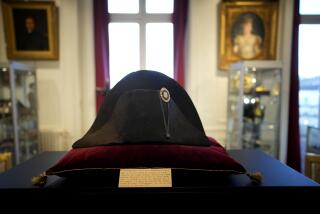Hat Check
- Share via
In the age of the baseball cap triumphant, it was a week when we relearned the word “millinery.”
Almost simultaneously, two of the world’s last and most exalted enclaves of ceremony and formality -- the Vatican and Windsor Castle -- summoned the faithful to two of life’s seminal rituals: death and marriage. And hats were de rigueur.
The Windsor wedding hatched flyaway confections on heads both royal and common, and the papal funeral brought forth Eastern Rite domes and the scarlet skullcaps called zucchetti. Narrow your eyes, block out the crowds, and the centuries -- along with the T-shirts and flip-flops -- fell away.
At the top of the head-covering hierarchy is the crown imperial. In Rome, we saw the crimson of the biretta, the draped and wrapped black of Orthodox and Muslim clerics, and cardinals’ miters -- sign of churchmen for almost 1,000 years, some gilded and bejeweled, and some, fashioned of the white damask worn in the presence of the pope, rather like elaborately folded napkins at a gala banquet.
At Windsor, the world saw an almost-tiara on an almost-queen. The British, who love bird-watching and gardening, found a way to transfer both affections to their heads in whimsically flowered and feathered tableaux tremblants, some perched as tentatively as hummingbirds on the heads of women who routinely bare large patches of flesh but would not have dreamed of setting foot in Windsor Castle bare-headed.
More than fleeting fashion, hats are history worn on our heads, hallmarks of human antiquity, restored for the occasion, preserved by the digital eye.
More to Read
Sign up for Essential California
The most important California stories and recommendations in your inbox every morning.
You may occasionally receive promotional content from the Los Angeles Times.











